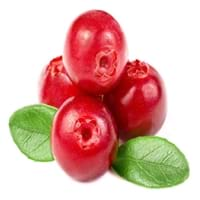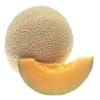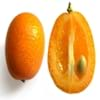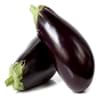Health Benefits
Cancer prevention, Heart care, Kidney stone treatment, Scurvy treatment, Ulcer prevention
Cancer prevention, Diarrhea treatment, Muscle pain relief, Piles treatment, Prevents constipation, Skin cleansing, Ulcer treatment
General Benefits
Anti-inflammatory properties, Boosts immune system, Digestive aid, Fights against infections, Strengthens bones
Controls blood pressure, Digestive aid, Maintains healthy cholesterol level, Strengthens bones
Skin Benefits
Anti-aging benefits, Reduces wrinkles, Skin rejuvenation, Treatment of acne
Anti-aging benefits, Hydrates skin, Skin rejuvenation
Hair Benefits
Promotes longer and healthier hair, Protects hair, Treatment of dandruff
Prevents hair loss, Shiny hair, Softening mask
Allergy Symptoms
Anaphylaxis, Breathing difficulty, Itching, Skin rash, Swelling of mouth, tongue or lips
Abdominal pains, Decrease in blood pressure, Dizziness, Hives, Itching of mouth, Lightheadedness, Swelling, Swelling of mouth, tongue or lips, Weak or racing pulse, Wheezing
Side Effects
Allergic reaction, Diarrhoea, Nausea, Stomach pain, Vomiting
Headache, Intense headache, Tooth decay
Best Time to Eat
Any time except an hour after meal, Don't consume at night and before bed
As a snack in the late afternoon, Don't consume at night and before bed, Eat the fresh ones, avoid mixing with any other foods, don't eat after meal.
Vitamin B5 (Pantothenic Acid)
Vitamin C (Ascorbic Acid)
Vitamin K (Phyllochinone)
Phytosterol
Not Available
Calories in Fresh Fruit with Peel
Calories in Fresh Fruit without Peel
Not Available
Type
Berry
Berry, Tropical
Season
Autumn
All seasons
Varieties
Early Black, Howes, Ben Lear and Stevens
Cavendish Bananas, Lady Finger Bananas, Pisang Raja, Williams Bananas and Cooking Bananas
Shape
Round
Curving Cylinder
Origin
North America
Papua New Guinea
Soil Type
Clay, Sandy, Well-drained
Well-drained
Climatic Conditions
Warm
Warm
Facts about
- Europeans thought the cranberry blossom looked like the head of a sandhill crane, hence the name Cranberry.
- They are also known as bounce berries as they bounce when they ripe.
- Cranberries do not grow in water.
- As bananas contain potassium-40 which is radioactive isotope of potassium, bananas are radioactive.
- Bananas float in water.
- There are around 1000 varieties of bananas.
- Eating this fruit will cheer you up.
Top Producer
United States of America
India
Other Countries
Azerbaijan, Belarus, Bulgaria, Canada, Latvia, Macedonia, NA, Romania, Tunisia, Ukraine
Brazil, Cameroon, China, Colombia, Ecuador, Ghana, Indonesia, Philippines, Uganda
Top Importer
Europe
Europe
Top Exporter
United States of America
Ecuador
Botanical Name
Vaccinium Macrocarpon
Musa acuminata and Musa balbisiana
Synonym
Oxycoccus macrocarpus
Musa × dacca , Musa × sapidisiaca , Musa × sapientum
Subkingdom
Tracheobionta
Tracheobionta
Division
Magnoliophyta
Magnoliophyta
Class
Magnoliopsida
Liliopsida
Subclass
Dillenhidae
Liliidae
Order
Ericales
Zingiberales
Family
Ericaceae
Musaceae
Species
Vaccinium macrocarpon
M. acuminata , M. balbisiana
Generic Group
Heath
Banana
Difference Between Cranberry and Banana
We might think that Cranberry and Banana are similar with respect to nutritional value and health benefits. But the nutrient content of both fruits is different. Cranberry and Banana Facts such as their taste, shape, color, and size are also distinct. The difference between Cranberry and Banana is explained here.
The amount of calories in 100 gm of fresh Cranberry and Banana with peel is 46.00 kcal and 95.29 kcal and the amount of calories without peel is Not Available and 89.00 kcal respectively. Thus, Cranberry and Banana belong to Low Calorie Fruits and High Calorie Fruits category.These fruits might or might not differ with respect to their scientific classification. The order of Cranberry and Banana is Ericales and Zingiberales respectively. Cranberry belongs to Ericaceae family and Banana belongs to Musaceae family. Cranberry belongs to Vaccinium genus of Vaccinium macrocarpon species and Banana belongs to Musa genus of M. acuminata , M. balbisiana species. Beings plants, both fruits belong to Plantae Kingdom.









